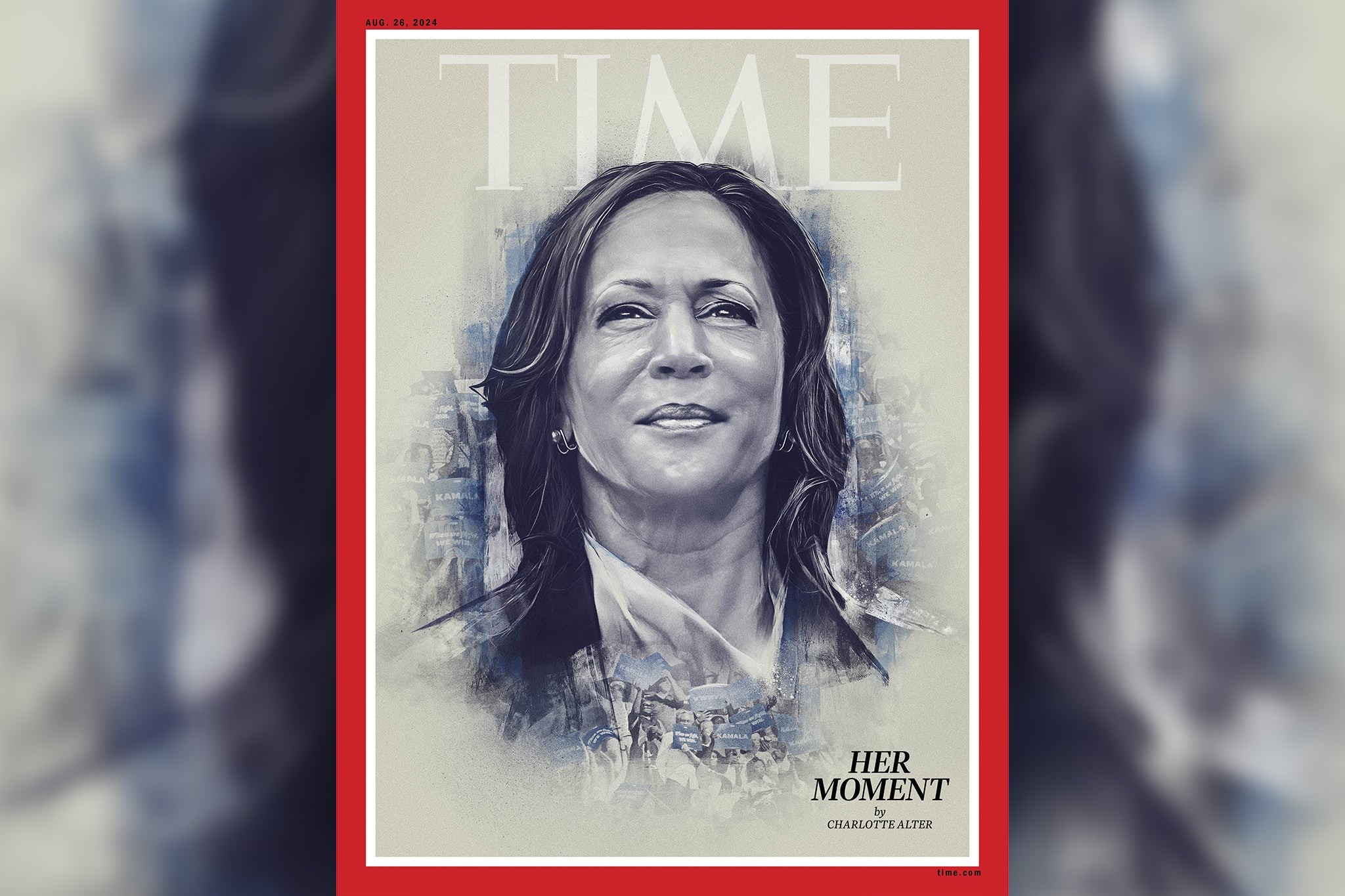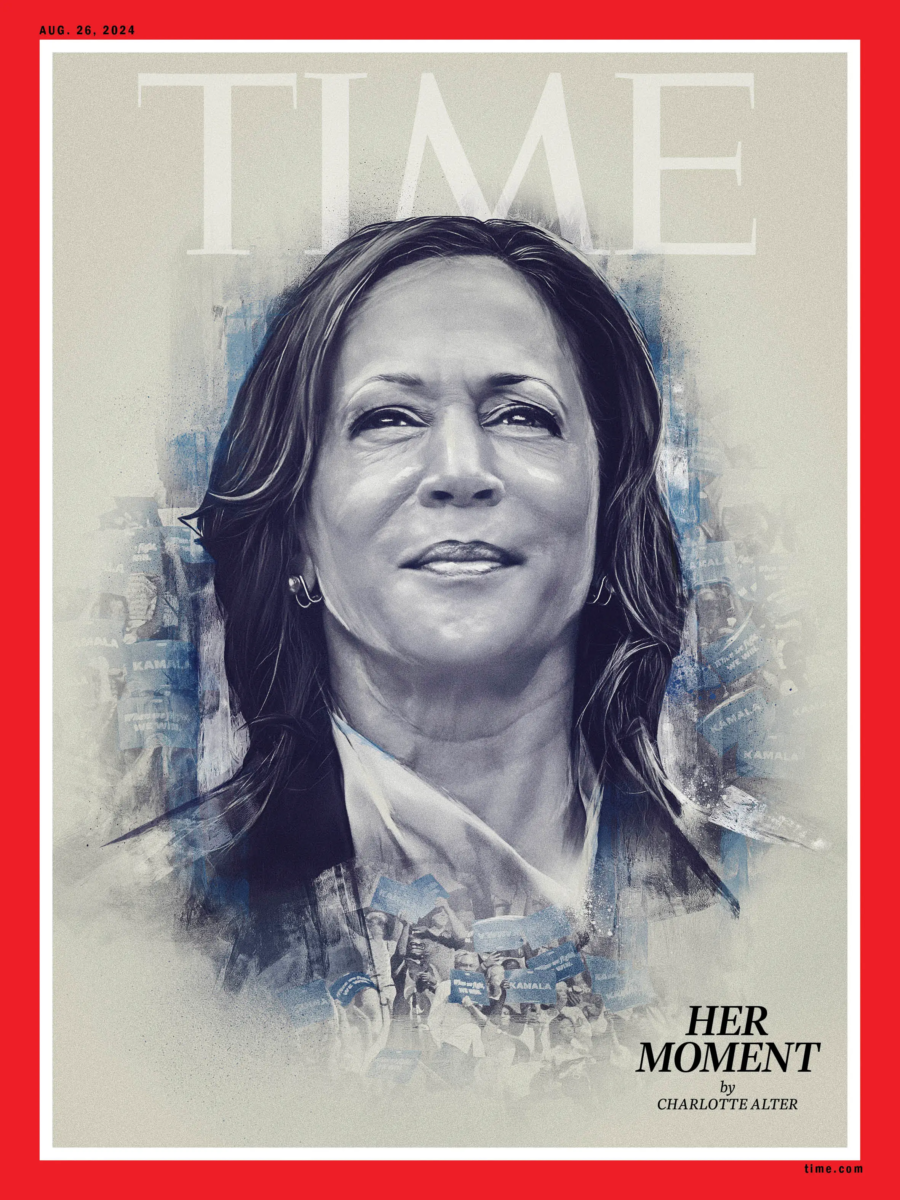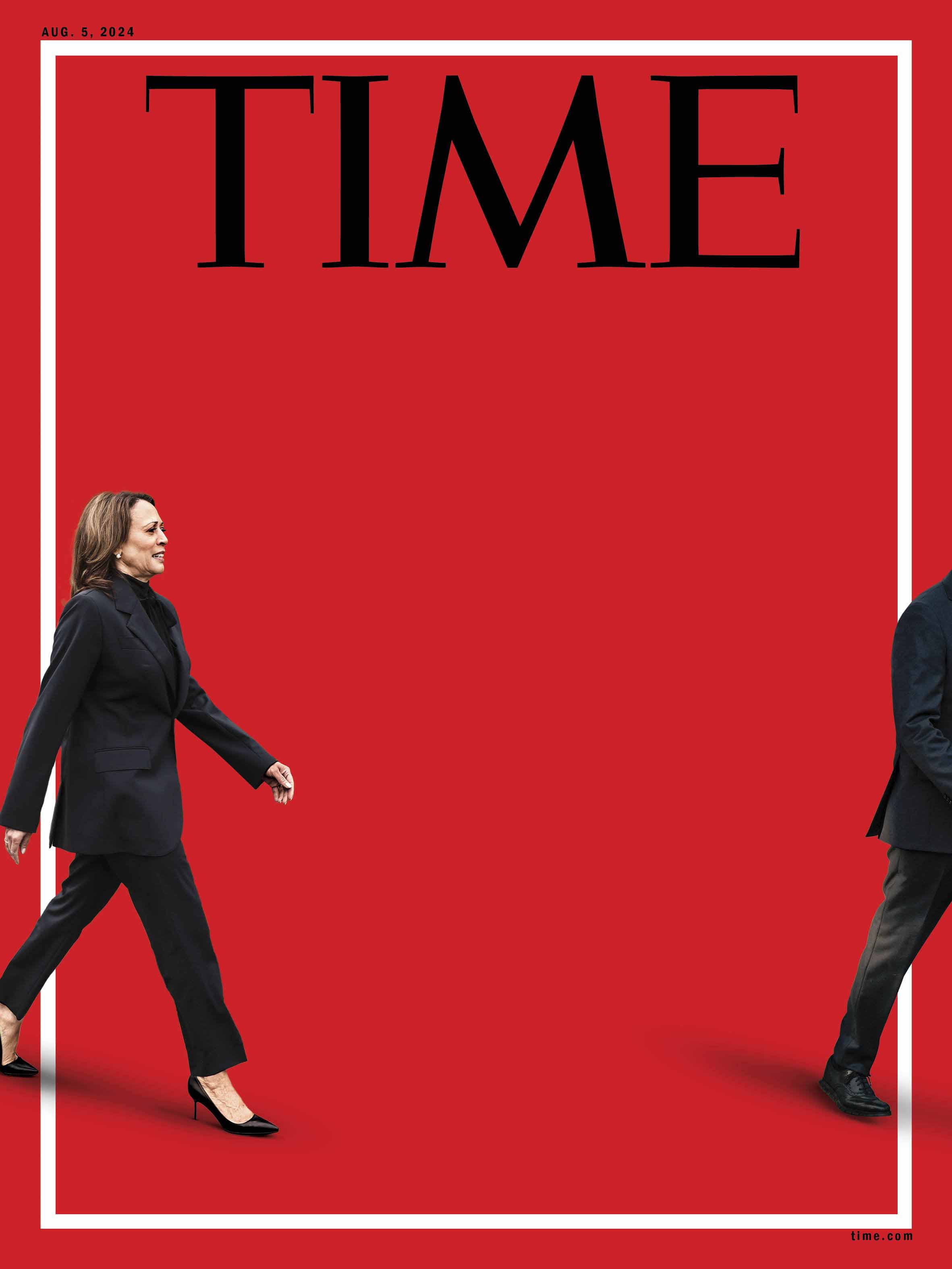Kamala Cover Of Time: The Rise Of A Historic Figure
When Kamala Harris graced the cover of Time Magazine, it wasn't just another headline. It marked a pivotal moment in history that resonated across the globe. Her presence on the cover symbolized more than a political achievement; it represented a cultural shift and a beacon of hope for millions. As we delve into this story, you'll uncover the layers of significance behind this iconic moment and why it matters so deeply.
Kamala Harris' cover of Time Magazine is not just about a photo or a headline. It's about the story behind the image, the journey she took to get there, and the impact it has on society. This cover is more than a magazine spread; it's a testament to her resilience, her achievements, and her role as a trailblazer in modern politics.
As we explore this topic, we'll take you through the details of Kamala's cover, its historical significance, and what it means for the future of leadership and representation. Let's dive in and discover why this moment is so important in today's world. So, buckle up and let's talk about Kamala Harris and her unforgettable moment on Time's cover.
Read also:Unveiling The Secrets Of Bar Record Ginza A Nightlife Gem In Tokyo
Understanding Kamala Harris' Journey to Time Cover
Before we jump into the specifics of the Time cover, let's first understand Kamala Harris' journey. Her path to becoming a vice president and a global icon wasn't easy. Born in Oakland, California, Kamala grew up in a household that valued education and activism. Her mother, a scientist, and her father, an economist, instilled in her a sense of purpose and determination from a young age.
Early Life and Education
Her early years were filled with challenges and opportunities. Kamala attended Howard University, a historically Black university, where she earned her degree in political science and economics. This education laid the foundation for her future career in law and politics. Her time at Howard also shaped her understanding of racial and social justice, which would later become central themes in her work.
The Significance of Kamala Cover of Time
Now, let's talk about the cover itself. Kamala Harris' appearance on the cover of Time Magazine wasn't just a random selection. It was a deliberate choice that highlighted her contributions to society and her role as a leader. The cover art, designed by renowned artist Kehinde Wiley, captures Kamala's essence and the historical weight of her achievements.
Artistic Representation on the Cover
Kehinde Wiley's artwork is known for its vibrant colors and bold lines. His portrayal of Kamala on the Time cover is no exception. The image showcases her strength, grace, and determination, making it an unforgettable piece of art. The cover quickly became a cultural icon, sparking conversations worldwide about representation and leadership.
Historical Context of Kamala's Cover
Placing Kamala Harris' cover in historical context is crucial. It marks a turning point in American history, where a woman of color holds one of the most powerful positions in the world. This isn't just about Kamala; it's about the millions of people who see themselves in her story and find inspiration in her success.
Breaking Barriers and Setting Records
- Kamala Harris is the first woman to serve as Vice President of the United States.
- She is also the first Black and South Asian person to hold this position.
- Her presence in politics challenges traditional norms and opens doors for future generations.
Impact on Society and Representation
The impact of Kamala's cover extends beyond politics. It influences societal norms and encourages diversity in leadership roles. Seeing Kamala on the cover of Time Magazine inspires young girls and women around the world to pursue their dreams, regardless of societal barriers.
Read also:Luxe Amp Lace Bridal Boutique Your Dream Wedding Dress Awaits
Empowering Women and Minorities
Representation matters, and Kamala's cover highlights this truth. It shows that leadership isn't confined to a single demographic. It's about bringing diverse voices to the table and ensuring everyone has a seat. Her presence on the cover is a powerful reminder of what's possible when we embrace inclusivity.
Behind the Scenes of the Time Cover
Ever wondered what goes into creating a Time Magazine cover? The process is intricate and involves collaboration between artists, photographers, and editors. For Kamala's cover, the team worked closely with Kehinde Wiley to ensure the artwork reflected her personality and achievements accurately.
Collaboration and Creativity
Kehinde Wiley's approach to the cover was innovative and thoughtful. He combined traditional painting techniques with modern elements to create a piece that resonates with contemporary audiences. The result is a cover that captures Kamala's essence and the historical significance of her role.
Public Reaction and Media Coverage
When Kamala's cover was unveiled, it sparked a wave of reactions across social media and traditional news outlets. People from all walks of life celebrated her achievement, recognizing it as a milestone in American history. The media coverage was extensive, with articles, interviews, and discussions centered around the cover's impact.
Celebration and Criticism
- Many praised the cover for its powerful message and artistic merit.
- Some critics questioned the choice of artist and the overall design.
- Despite the mixed reactions, the cover succeeded in sparking meaningful conversations about representation and leadership.
Lessons Learned from Kamala's Cover
What can we learn from Kamala Harris' appearance on the Time cover? It teaches us the importance of perseverance, representation, and the power of art to convey messages. Kamala's journey to the cover is a lesson in breaking barriers and achieving greatness despite challenges.
Key Takeaways
- Representation in leadership matters and can inspire future generations.
- Art can be a powerful tool for conveying messages and sparking change.
- Success is not just about individual achievements but also about uplifting others.
Future Implications for Leadership and Representation
The implications of Kamala's cover extend into the future. It sets a precedent for how leaders are portrayed and how representation is valued in media. As we move forward, we can expect more diverse voices to be highlighted in prominent roles, paving the way for a more inclusive society.
Shaping the Future of Leadership
Kamala Harris' cover of Time Magazine is more than a moment in history; it's a catalyst for change. It challenges us to rethink our perceptions of leadership and representation, encouraging us to embrace diversity in all its forms. As we look to the future, Kamala's legacy will continue to inspire and influence generations to come.
Conclusion: Reflecting on Kamala's Time Cover
In conclusion, Kamala Harris' cover of Time Magazine is a landmark moment that highlights her achievements and the importance of representation in leadership. It's a story of resilience, determination, and the power of art to convey messages that resonate with people worldwide.
We invite you to share your thoughts and reflections on this topic in the comments below. Your voice matters, and together, we can continue the conversation about representation and leadership. Don't forget to explore other articles on our site for more insightful content.
Table of Contents
- Understanding Kamala Harris' Journey to Time Cover
- Early Life and Education
- The Significance of Kamala Cover of Time
- Artistic Representation on the Cover
- Historical Context of Kamala's Cover
- Breaking Barriers and Setting Records
- Impact on Society and Representation
- Empowering Women and Minorities
- Behind the Scenes of the Time Cover
- Collaboration and Creativity
- Public Reaction and Media Coverage
- Celebration and Criticism
- Lessons Learned from Kamala's Cover
- Key Takeaways
- Future Implications for Leadership and Representation
- Shaping the Future of Leadership
- Conclusion: Reflecting on Kamala's Time Cover


